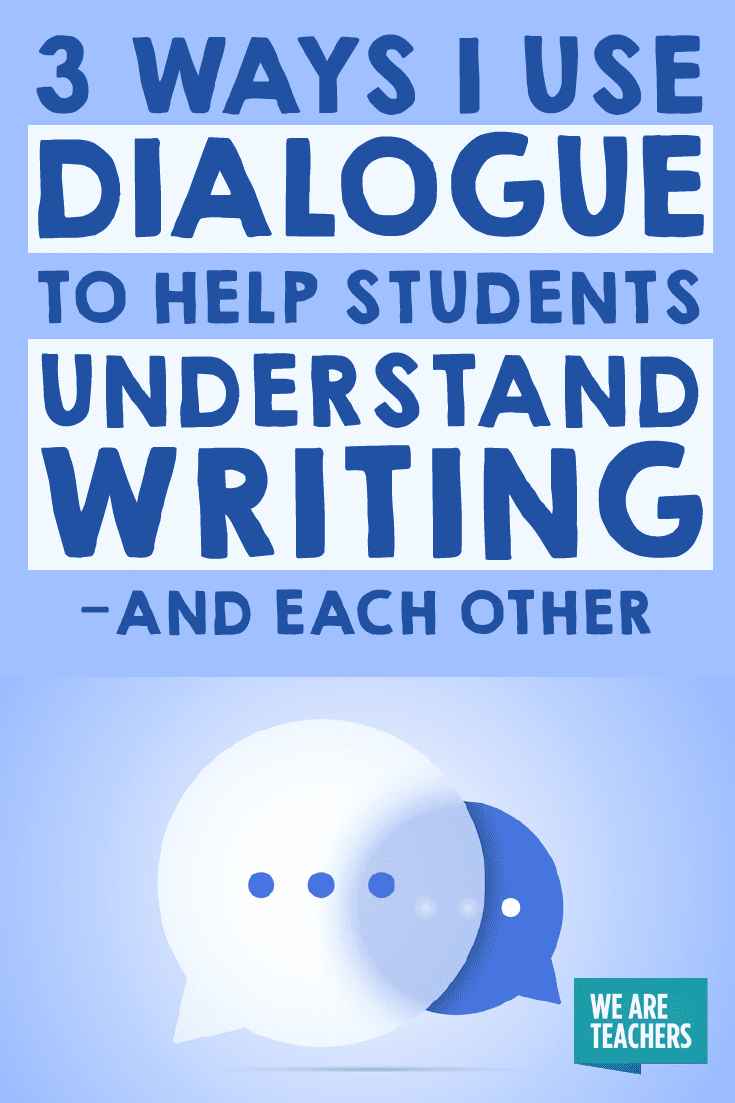Do your students spring to life when they see a play script coming? They immediately begin to beg for roles—small ones, funny ones, starring roles, cameos, don’t they? It sounds familiar to you, doesn’t it?
Students willingly participate in dialogues, especially when there is some argument built in. So do adults. In fact, that’s what readers and writers do. I’m talking to you right now through these words, and I can’t see your part of this conversation, but I know you’re there, talking back to me. You and I have developed brains, and we know that writing and reading are dialogues, not monologues. But our students don’t see this. They often see readers and writers as disconnected and lifeless.
In my book Grammar Keepers, which features lessons to tackle students’ most common grammar problems, I use dialogue to help students take a step back and understand where they are tripping up. I share more about this approach in this Facebook Live interview with WeAreTeachers:
https://www.facebook.com/WeAreTeachers/videos/10156346742033708/
1. I use dialogue to help students understand grammatical choices.
You make grammatical choices all the time when you write, and every one of these is the result of some kind of dialogue in your head. The more skilled you are, the faster (and more invisible) the dialogue. Many of our students don’t know these dialogues, so if we supply them with the words (and let them practice), the dialogues become internalized, like the words of a song. Soon students cannot make a grammatical choice without hearing the dialogue in their heads. Dialogues make the grammar lessons stick.
For example:
A: Will you read me this sentence, please?
B: They’re my desperate friends.
A: How did you spell “they’re”?
B: T-h-e-y-apostrophe-r-e.
A: Hmm … I think that’s the wrong one.
B: I don’t think so. It’s right.
A: Can you prove it?
B: Let’s see … They are my desperate friends. They’re my desperate friends.
A: Oh! That’s right! It’s correct.
B: Thank you. Thank you very much.
There is a dialogue with proof for every choice we make. We can use dialogue to teach these choices, to practice them, and to proofread for them.
2. I use dialogue to help students expand their writing.
Sometimes students make their point in writing but don’t know how to add details, or to say more about it, without just repeating the point. One useful way to help them is to have them pretend (with a puppet, or a hand, or a volleyball like Wilson) that some other person is disagreeing with them.
For example, if a student writes My mom was mad, you might challenge them to imagine an arguer saying, “Pfft! You made that up. She wasn’t mad. You don’t even know what a mad mom looks like.”
A student would automatically know how to talk back to this: “There was steam coming out of her ears and veins bulging in her neck, and she was opening and closing cabinet doors with so much force I thought I’d better wait to talk to her.”
Students know what’s in their heads. Another voice can help them bring it out.
3. I use dialogue to help students understand each other.
Civil discourse is a lost art in America, and regaining it just might save our civilization. “How do you know?” are fighting words too often, and listening often results in an expanded outlook and a changed viewpoint. That’s growth. So “you’re right” doesn’t mean “I’m wrong.” It means “we’re both better.”
A: It’s supposed to rain today.
B: How do you know?
A: Are you calling me a liar?
(Violence ensues.)
A: It’s supposed to rain today.
B: How do you know?
A: I saw it on my weather app. 80 percent chance at 10 a.m.
(Umbrella ensues.)
Can you imagine how much stronger our nation would be if we could all talk to each other?
Part of our teaching craft is building dialogue into the work of our students. And grammar is a useful place to start.
Here’s a link to learn more about my book Grammar Keepers, if you’re interested.



